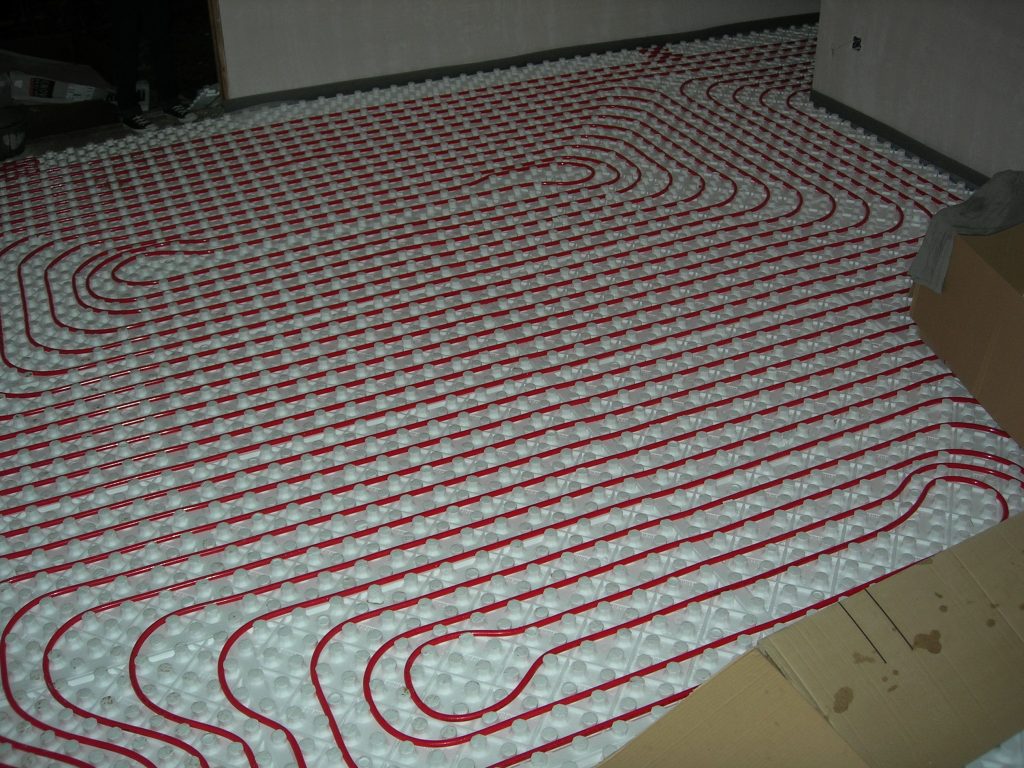Is Radiant Heat a Good Idea?

In principle, it sounds like a wonderful idea: heating your home with no more baseboards or forced air, and no more freezing cold feet. In practice, radiant heating poses an equal mix of opportunities and challenges. If you’re considering one of these systems for your home, Ace Plumbing Heating and Air Conditioning has some suggestions – and cautionary notes – before you get your hopes up.
What Is Radiant Heat?
Radiant heat runs a system of coils (for the electrical version) or tubes (for hot water) under your home. You can’t see them, but you’ll feel the warmth. Unlike other forms of heat, radiant heat has the advantage of being even and gentle, with no hot spots.
How Radiant Heat Works
As we’ve mentioned, you have two choices for installing a radiant heat system.
Electric Radiant Heat
Here, a series of resistant wires that work similar to the burners on an electric stove (but not nearly as hot) are laid in a pattern that ensures even coverage. It’s equally effective as the hot water method, and is ideally suited to a room where running additional ducting or pipe would be difficult. However, it’s also very power-intensive, making it prohibitively expensive as a whole-home solution.
Hydronic Radiant Heat
“Hydronic” is just a fancy term for a hot water system. It works similarly to hot water baseboard, but it circulates heated water through a system of pipes laid beneath the floor instead of using traditional baseboards. It’s very energy efficient.
Disadvantages of Radiant Heat
Radiant heat does a great job of keeping you toasty, and when you’re using a hydronic system it won’t tack on any extra costs to your monthly energy bill (in fact, you may even see a savings). However, it can come with significant downsides.
Unlike a forced air system, which couples a furnace to the ductwork that many homes already have for their air conditioning, radiant heat relies on a boiler. Installation isn’t simple, since either method must be installed between your sub-floor and your floor covering. This can be done as a wet installation (the tubing or coils are embedded in the concrete slab, or in a thin layer of concrete poured over the subfloor), or as a dry installation which simply suspends the coils or tubing between the floor joists (which requires a basement or crawlspace).
If this sounds complex, you’re not far off the mark. Indeed, we do not suggest installing radiant heat as a free-standing project because it can be disruptive even by the standards of the usual home project. It’s better suited to new construction or a major renovation when things are already torn up. Also bear in mind that some floor coverings are better suited to radiant heat; tile and stone can each conduct and retain heat, making them ideal, whereas the insulating qualities of carpet (and in some cases, even the use of area rugs with a carpet pad) can prevent heat transfer and defeat the purpose of a radiant heat system.
Radiant Heat Installations
If you’ve read this far and you’re at the right point in life for a radiant heat system – namely, you’re either having a new home built or undertaking renovations – give us a call. We’ll be happy to provide suggestions and (of course) take care of the installation. Get in touch with Contact Ace Plumbing Heating and Air Conditioning today!



